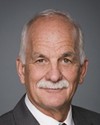I do.
Thank you very much, Madam Chair.
I'm pleased to be here to discuss the 2009-2010 supplementary estimates (B) for my department.
With me today are Michelle d'Auray, the secretary of the Treasury Board, and Christine Walker, assistant secretary, corporate service sector and chief financial officer. Also with me is Alister Smith, assistant secretary, expenditure management sector, and Hélène Laurendeau, the assistant deputy minister, compensation and labour relations, of the office of the chief human resources officer.
As I said, I'm here to discuss the supplementary estimates. As you know, supplementary estimates are a part of the normal parliamentary approval process to ensure previously planned government initiatives receive the necessary funding to move forward.
The total funding requested in these supplementary estimates is $760.5 million, of which $713 million represents new appropriations. Most of this funding is to cover the costs of new collective agreements. I'm happy to say this has been a very busy and successful year in terms of collective bargaining in the federal government. These supplementary estimates request $735.4 million to support more than 100 departments, agencies, and appropriation-dependent crown corporations in meeting the additional personnel costs that have resulted from new collective agreements and other compensation decisions.
These collective agreements and the resulting requirement for funds comply with the Expenditure Restraint Act, an important part of our commitment to responsible spending during one of the worst economic crises in living memory.
These estimates also complete the transfer of resources needed to create the office of the chief human resources officer, which is housed in Treasury Board Secretariat. This important change was announced by the Prime Minister in February 2009 and was part of our response to the recommendations made by the Prime Minister's advisory committee on the public service. The advisory committee called on the government to simplify the organizational structure for human resources management. We responded last year with an ambitious strategic review of the six organizations that have central responsibilities for human resources management. Through this review, over $250 million in funding was put under the microscope. The end result is a new and leaner governance structure that reduces duplication and puts us in an even better position to continue renewing the public service. This new structure ensures that public servants have the support they need to continue providing sound policy advice to the government and high-quality services to Canadians.
I would like to take a moment to speak about Treasury Board's strategic review process as it applies government-wide.
As you know, we are in the third year of strategic reviews. Strategic reviews are a key pillar of our new expenditure management system, which was implemented in 2007 as part of an ongoing commitment to better manage government spending. Through the strategic review process, the government systematically assesses the relevance and performance of every program on a cyclical basis. Organizations review their direct program spending and the operating costs of their major statutory programs to assess how and whether these programs are effective and efficient, meet the priorities of Canadians, and are aligned with core federal responsibilities.
Federal organizations, including departments, agencies, and crown corporations, identify reallocation proposals that can be used to invest in other programs that meet the government's and Canadians' priorities. Recommendations come from the organization or agency undergoing a strategic review. The minister and the deputy head of the organization, as well as its senior financial officer, sign off on their respective reviews, and their recommendations are then considered as part of the government's annual budget planning process. This system ensures value for money for all government spending. This is important at all times. Our government is committed to ensuring that every tax dollar is aligned with the priorities of Canadians.
Madam Chair, in conclusion, 10 months ago our government brought forward the earliest budget in Canadian history. Moving at record speed, we cut red tape and we delivered the largest economic stimulus in Canadian history. Our plan is working for Canada, and I'm proud of the role my department played in this process.
These estimates reflect the progress that has been made and demonstrate our ongoing commitment to ensuring value for money. This is one of my department's top priorities, and I can assure you that together with my officials we will continue delivering strong accountable management, and we will ensure that resources are allocated to achieve results for Canadians.
I am happy to answer your questions.




